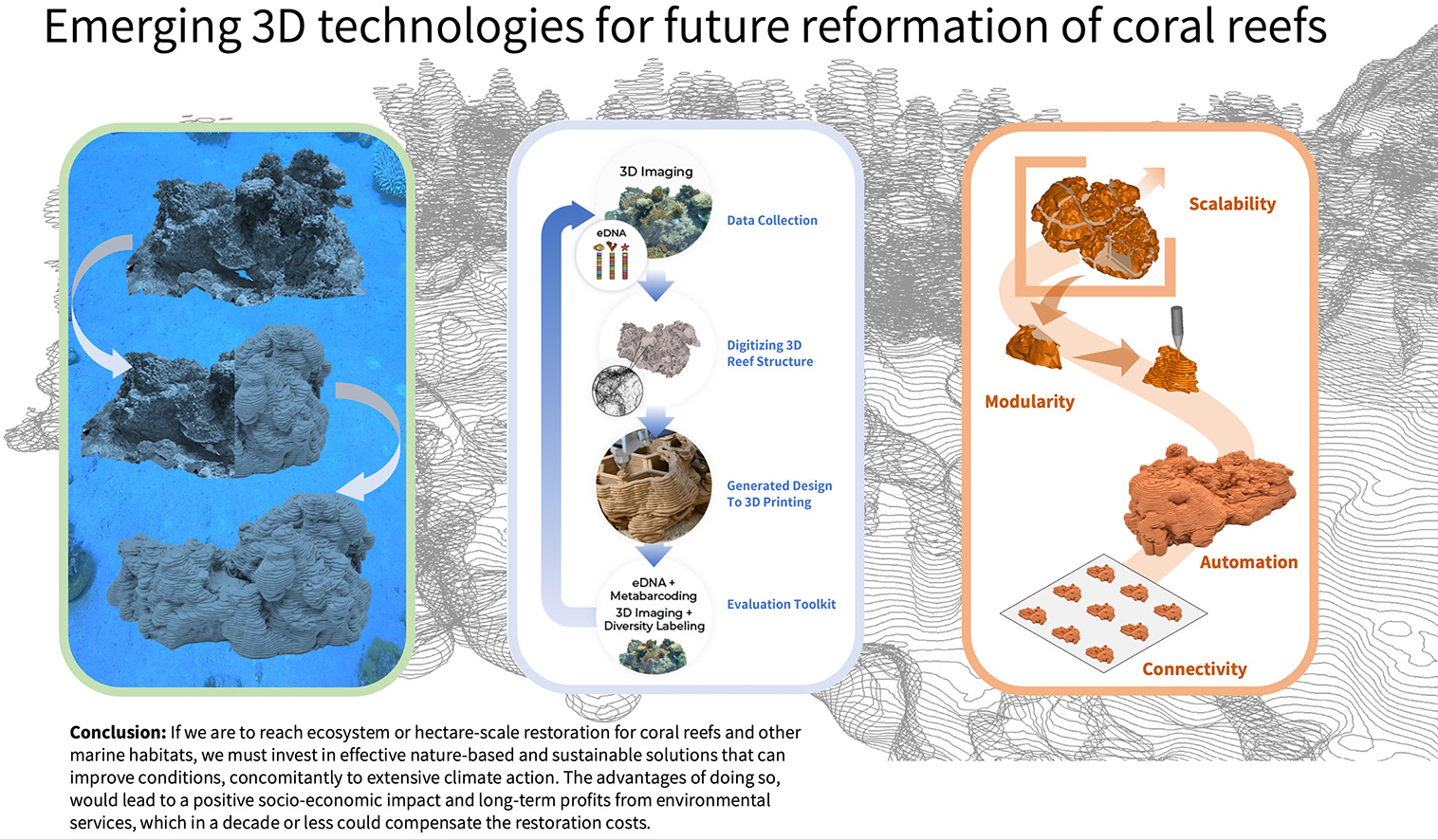Complexity
Cf. Evolution
Definitions and Core Principles
Complexity and Physics
Habitat Structure and Complexity
In biological systems, more complex habitats provide greater opportunities/affordances to more individuals and species.
Ware, Colin, Jennifer A. Dijkstra, Kristen Mello, Andrew Stevens, Brandon O’Brien, and William Ikedo. ‘A Novel Three-Dimensional Analysis of Functional Architecture That Describes the Properties of Macroalgae as a Refuge’. Marine Ecology Progress Series 608 (2019): 93–103. https://doi.org/10/gpt8n2.
Microhabitat Structure and Complexity
Lennon, Ox, Heiko U. Wittmer, and Nicola J. Nelson. ‘Modelling Three-Dimensional Space to Design Prey Refuges Using Video Game Software’. Ecosphere 12, no. 1 (2021): e03321. https://doi.org/10/hg2h.
Meager, Justin J., and Thomas A. Schlacher. ‘New Metric of Microhabitat Complexity Predicts Species Richness on a Rocky Shore’. Marine Ecology 34, no. 4 (2013): 484–91. https://doi.org/10.1111/maec.12049.
Measuring Complexity
Generating Complexity
Examples
"The key to understanding modern thermodynamics is that it involves two levels of description. There’s the microscopic level, which is a precise description of the positions and motions of all the atoms in any particular system. This is called the microstate. Then there’s the macroscopic level, or macrostate of the system, which is a broad-brush approximate description in terms of a few variables, such as the temperature and pressure of a gas. Studying a system’s thermodynamics involves assessing the relationship between these two levels of description.
A simple example is a standard brick building. The macrostate in this case is the architectural drawing; the microstate is exactly where each brick goes. The architect needs to specify only that brick walls of such-and-such dimensions are built, with openings for windows and doors. He doesn’t need to say which bricks go where. Most bricks are identical, so it doesn’t affect the structure if two identical bricks are swapped. Thus there are a huge number of different microstates that give the same macrostate.
Let’s contrast this with a building by Frank Gehry, like the Guggenheim Museum Bilbao, whose outer surface is made up of individually crafted metal sheets. To make the curved surfaces of Gehry’s designs, each sheet must be different, and it matters where each one goes. The building will take the form intended by the architect only if each and every metal sheet goes in its precise place. In this case, the architectural drawing again specifies the macrostate, and where each sheet goes is the microstate. But unlike the traditional brick building, there is no freedom to tamper with the microstate. There is only one microstate that gives the intended macrostate.
The concept of how many microstates could give the same macrostate thus gives us a way to explain how Gehry’s buildings are so revolutionary. This concept has a name, which is entropy. The entropy of a building is a measure of the number of different ways to put the parts together to realize the drawing of the architect. A standard brick building has a very high entropy. A building by Frank Gehry can have an entropy of zero, corresponding to its unique microstate.
We can see from this example that entropy is inverse to information. It takes a lot more information to specify the design for a Gehry building because you need to tell exactly how to fabricate each piece and exactly where every piece goes. It takes much less information to specify the design of a normal brick building because all you need to know are the dimensions of its walls."
Smolin, Lee. Time Reborn: From the Crisis in Physics to the Future of the Universe. Boston: Houghton Mifflin Harcourt, 2013.
Complexity and Biodiversity
Structurally/geometrically complex habitats tend to contain more species and higher total abundances than simple habitats.
Torres-Pulliza, Damaris, Maria A. Dornelas, Oscar Pizarro, Michael Bewley, Shane A. Blowes, Nader Boutros, Viviana Brambilla, et al. ‘A Geometric Basis for Surface Habitat Complexity and Biodiversity’. Nature Ecology & Evolution 4, no. 11 (2020): 1495–1501. https://doi.org/10/ghmz6c.
Ecological Heterogeneity
Kolasa, Jurek, and Steward T. A. Pickett, eds. Ecological Heterogeneity. New York: Springer, 1991.
Measuring Habitat Complexity
Loke, Lynette H. L., and Ryan A. Chisholm. ‘Measuring Habitat Complexity and Spatial Heterogeneity in Ecology’. Ecology Letters, 2022. https://doi.org/10/gqp4p2.
Reconstructing Habitat Complexity
Cf. Design, generative design, Ecocentric Design - How To

Levy, Natalie, Ofer Berman, Matan Yuval, Yossi Loya, Tali Treibitz, Ezri Tarazi, and Oren Levy. ‘Emerging 3D Technologies for Future Reformation of Coral Reefs: Enhancing Biodiversity Using Biomimetic Structures Based on Designs by Nature’. Science of The Total Environment 830 (2022): 154749. https://doi.org/10/gpvbg6.
General need for restoration at multiple scales:
Monsarrat, Sophie, Néstor Fernández, Henrique M. Pereira, and Jens‐Christian Svenning. ‘Supporting the Restoration of Complex Ecosystems Requires Long‐Term and Multi‐Scale Perspectives’. Ecography 2022, no. 4 (2022). https://doi.org/10/gqp4kg.

Bullock, James M., Elisa Fuentes-Montemayor, Ben McCarthy, Kirsty Park, Rosie S. Hails, Ben A. Woodcock, Kevin Watts, Ron Corstanje, and Jim Harris. ‘Future Restoration Should Enhance Ecological Complexity and Emergent Properties at Multiple Scales’. Ecography 2022, no. 4 (2022). https://doi.org/10/gn9977.
References
Gribbin, John R. Deep Simplicity: Chaos, Complexity and the Emergence of Life. London: Penguin, 2009.
Backlinks